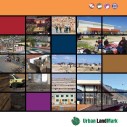Conflitti territoriali: sei interpretazioni Territorial Conflicts: Six Interpretations
Nelle società contemporanee i conflitti territoriali sono ormai diventati più frequenti e diffusi dei conflitti sociali. Il loro tratto caratteristico è costituito da comunità che difendono il loro territorio da aggressioni esterne che possono essere costituite tanto da manufatti invasivi, quanto da insediamenti umani sgraditi. Questo articolo si propone di rispondere a tre domande: 1) perché si sono diffusi in questi ultimi venti anni? 2) qual è il “vero” oggetto del contendere? 3) come possono essere affrontati, con quali possibili sbocchi?




